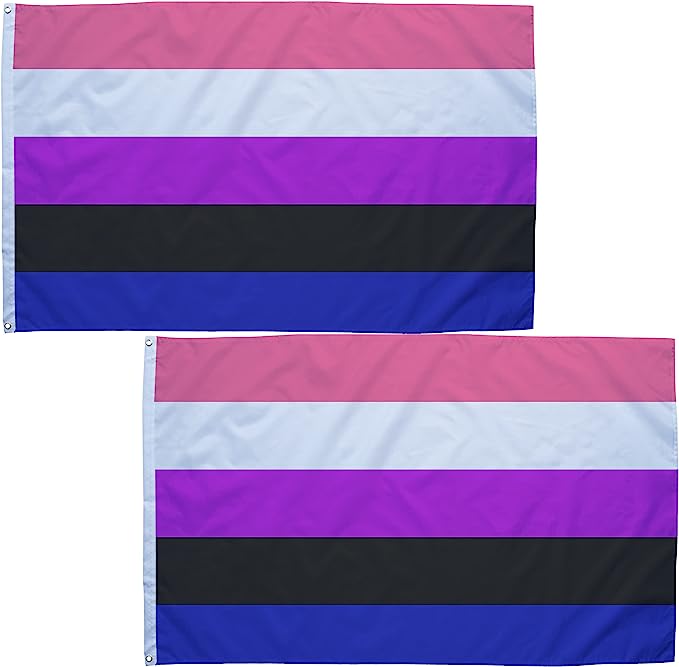The Genderfluid flag is a symbol of the fluidity of gender. For those who identify as Genderfluid, the flag serves as a source of pride, identity, and support. While the flag’s design may seem simple at first glance, each of its five stripes represents a different aspect of Genderfluidity. In this blog post, we will explore how the Genderfluid flag represents the fluidity of gender.

Pink Stripe: Representing Femininity
The first stripe on the Genderfluid flag is pink, representing femininity. The color pink is often associated with femininity, and for many Genderfluid individuals, femininity is an important aspect of their gender identity. However, Genderfluidity means that individuals may also feel a connection to masculinity or lack of gender at times.
The pink stripe on the flag represents this aspect of Genderfluidity. It acknowledges that while an individual may identify as Genderfluid, they may still feel a strong connection to their feminine side at times.
White Stripe: Representing Neutrality
The second stripe on the Genderfluid flag is white, representing neutrality. For many Genderfluid individuals, their gender identity fluctuates between male and female, with periods of neutrality in between. Neutrality allows individuals to feel comfortable in their own skin without the pressure of conforming to societal norms.
The white stripe on the flag is a symbol of the Genderfluid experience. It acknowledges that an individual’s gender identity may not fit within the traditional binary of male or female, and it allows them to express this aspect of their identity without feeling like they have to choose one side or the other.
Purple Stripe: Representing a Mixture of Masculinity and Femininity
The third stripe on the Genderfluid flag is purple, representing a combination of masculinity and femininity. Many Genderfluid individuals feel that their gender identity is a mixture of both male and female, rather than one or the other. This mixture allows individuals to feel comfortable expressing themselves in ways that may not fit within traditional gender roles.
The purple stripe on the flag represents this aspect of Genderfluidity. It acknowledges that an individual’s gender identity may not fit within traditional gender norms and allows them to express themselves in a way that feels authentic and true to themselves.
Black Stripe: Representing the Absence of Gender
The fourth stripe on the Genderfluid flag is black, representing the absence of gender. Genderfluid individuals may feel like their gender identity is constantly shifting and may even feel like they have no gender at all. This lack of gender allows individuals to feel comfortable expressing themselves in ways that may not fit within traditional gender norms.
The black stripe on the flag is a symbol of this experience. It acknowledges that an individual’s gender identity may not fit within traditional gender roles and allows them to express themselves in a way that feels authentic and true to themselves.
In conclusion, the Genderfluid flag is a powerful symbol of the fluidity of gender. Its five stripes each represent a different aspect of Genderfluidity, from femininity and neutrality to a mixture of masculinity and femininity and the absence of gender. The flag allows individuals to express themselves in a way that feels authentic and true to their gender identity without feeling like they have to conform to societal norms. The Genderfluid flag is a symbol of acceptance, support, and pride for the Genderfluid community.









